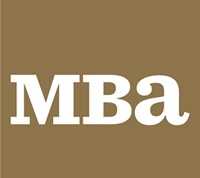The mortgage industry faces new operational challenges because interest rates keep increasing. As part of this industry transition, lenders now need to follow different procedures for home loan processing. Higher interest rates introduce complications that affect lenders’ and borrowers’ operations.
Studying these changes leads to better performance during mortgage operations. An analysis of elevated interest rates demonstrates their impact on mortgage loan processing, which includes application assessment and the duration of the closing process.
1. Stricter Income Verification
Acute scrutiny of income sources is standard practice for banks in periods when interest rates rise. Mortgage lenders require evidence showing that borrowers are capable of paying enlarged monthly installments.
Applications undergo extended verification since banks request an increased amount of documentation. Employment history gets deeper reviews. Overtime and bonus income face tougher evaluation standards.
The business stability of self-employed borrowers must pass thorough additional review examinations. Financial institutions verify debt-to-income ratios several times during the closing period. The method ensures safety for everybody involved in the lending process.
2. Longer Processing Times
When rates rise, more applications require bank representatives to perform manual examinations. The probability of automated loan approvals decreases as risks elevate. Underwriters allocate additional time to examine complete application information. Property appraisals experience multiple independent assessment phases.
Typical title inspections often identify multiple concerns that must be addressed before completion. The processing time increases as verification standards become more demanding. The complete closing process now takes extended periods extending to multiple weeks. Potential delays should be factored into the borrowing process by all borrowers.
3. Changed Refinancing Patterns
When mortgage rates keep rising, refinancing application volumes undergo significant changes. Refinancing has decreased significantly because many homeowners opt to delay their decision. The lending industry must readjust its resource distribution process.
Organizations that refined mortgages now process new purchase mortgages across their teams. Employees need additional training when adjusting to working with diverse loan types.
Changes in application patterns force processing systems to undergo modifications to stay effective. Market requirements drive lenders to modify their operating procedures.
4. Increased Documentation Requirements
Today, banks demand higher levels of evidence of assets and savings. Lenders demand borrowers maintain larger reserves of cash. Investment accounts are thoroughly examined during the verification process.
Lenders request borrowers to submit tax returns from additional years. The verification of employment takes place multiple times while you progress through the qualification step. Additional verification evidence becomes necessary to support rental income documents. Some insurers require elevated property coverage during the assessment procedure.
5. Enhanced Risk Assessment
When rates increase, lenders increase the minimum credit score threshold for mortgage approvals. Lenders now conduct additional, comprehensive evaluations of borrowers’ payment history records.
- The analysis focuses especially on recent credit inquiries. Employment stability is a central factor that lenders consider when making decisions. The asset verification process occurs several times throughout the application period.
- Debt assessment criteria will be intensely scrutinized. The tools used to assess risk receive regular platform updates. Markets heavily impact the way lenders establish their lending criteria.
6. Changed Lock-in Policies
During times when mortgage rates are increasing, lenders tend to provide longer rate lock-in options. Lenders modify lock-in fees in response to changing market volatility conditions.
Increased timelines add to the total expenses that borrowers must pay to get these extensions.
Tracking lock-in expiration dates becomes much more stringent. The regulatory parameters that affect relocking procedures restrict them while making them more expensive.
Conclusion
Interest rate hikes trigger changes throughout the mortgage loan processing system. The evolving business landscape demands that people be more patient when they interact with each other.
Lending organizations constantly adjust their operations to maintain quality control standards. In this regard, the knowledge about present market changes helps people set achievable targets while paying off the mortgage.
















